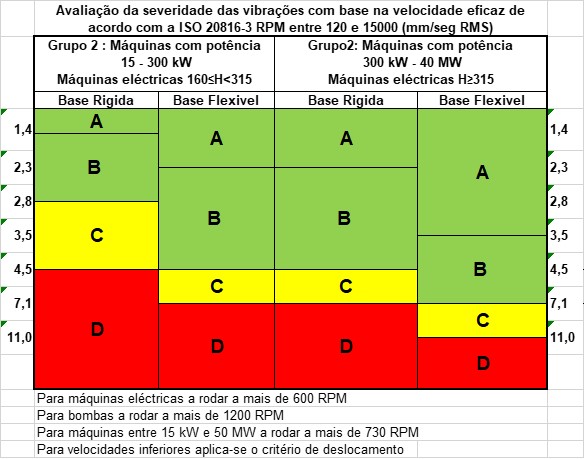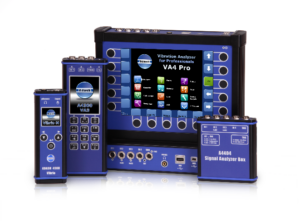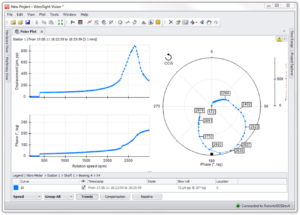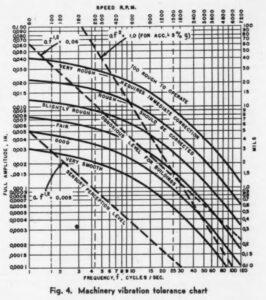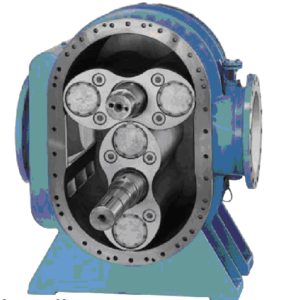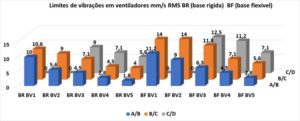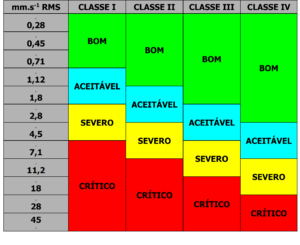At ISO 20816 – 3 of 2022
At ISO 20816 – 3 of 2022
With the publication of the ISO 20816 – 3 of 2022 you can throw away your copies of the:
- ISO 7919-3:2009
- ISO 10816-3:2009
In fact, they are no longer valid..
in october 2022 ISO has been published 20816-3:2022, which replaces the aforementioned.
This document specifies the general requirements for evaluating the vibration of various types of coupled industrial machines with power above 15 kW and operating speeds between 120 r / min e 30.000 r/min when measurements are taken in situ. Guidelines are provided for applying evaluation criteria for measurements made on non-rotating and rotating parts under normal operating conditions.. The guidelines are presented in terms of steady-state vibration values and in terms of changes in vibration level., that can occur at these stable values. Numerical values shown are intended to serve as guidelines based on worldwide experience., but they must be applied taking into account the specific characteristics of the machine that can make these values inappropriate. In general, the condition of a machine is evaluated by considering both shaft vibration and associated structural vibration, as well as specific frequency components, that do not always relate to the broadband severity values presented.
When it takes placevibration analysis gears, in a vibration analyzer when performingpredictive maintenance, commonvibration analyzer This article presents the vibration limits in rotary-dynamic pumps as defined in the ISO series of standards..
Machines where ISO is applied 20816 – 3 of 2022
Machine types covered by this document include:
a) turbines and steam generators with power less than or equal to 40 MW (vide Note 1 and Note 2);
b) steam turbines and generators with powers exceeding 40 MW that normally operate at speeds other than 1 500 rpm, 1 800 rpm, 3 000 your r/min 3 600 rpm (although generators rarely fall into this category) (vide Note 1);
c) rotary compressors;
d) industrial gas turbines with power less than or equal to 3 MW (vide Note 2);
e) turbofan;
f) electric motors of any kind, if the coupling is flexible. When an engine is rigidly coupled to a machine type covered by any other part of ISO20816, the engine can be rated against that other part or ISO 20816-3;
g) rollers and mills;
h) conveyors;
i) variable speed couplings; e
j) blowers or fans (vide Note 3).
USE 1 terrestrial steam turbines, gas turbines and generators with a capacity exceeding 40 MW, operating at 1.500 rpm, 1.800 rpm, 3.000 your r/min 3.600 r/min are covered by ISO requirements 20816-2. Generators in hydropower plants are covered by ISO 20816-5.
USE 2 Gas turbines of more than 3 MW are covered by the ISO 20816-4.
USE 3 The vibration criteria presented in this document are generally only applicable to fans with powers greater than 300 kW or fans that are not flexibly supported. As and when circumstances permit, recommendations for other types of fans will be prepared, including those of lightweight sheet metal construction. Until these recommendations are available, ratings can be agreed between manufacturer and customer; using results from previous operating experience (see also ISO 14694).
Machines that include a gear stage may fall within the scope of this document.. To perform gearbox acceptance tests, check the ISO 20816-9.
Machines where ISO does not apply 20816 – 3 of 2022
The following industrial machine types are not covered by this document:
k) terrestrial gas turbines, steam turbines and generators with powers exceeding 40 MW and speeds of 1 500 rpm, 1 800 rpm, 3 000 your r/min 3 600 rpm (ver ISO20816-2);
l) sets of gas turbines with powers greater than 3 MW (ver ISO20816‑4);
m) sets of machines in hydraulic power generation and pumping plants (ver ISO20816‑5);
n) alternative machines and machines solidly coupled to alternative machines (ver ISO10816‑6);
O) roto-dynamic pumps and any integrated or solidly coupled electric motors, where the impeller is mounted directly to the motor shaft or rigidly attached to it (ver ISO10816-7);
p) reciprocating compressor systems (see ISO 20816-8);
q) positive displacement rotary compressors (for example, screw compressors);
r) submerged motor pumps; e
s) wind turbines (ver ISO10816-21).
Field of application of requirements
The requirements of this document apply to in-situ broadband vibration measurements taken on shafts., bearings, bearing pedestals or machine housings under steady-state operating conditions within their rated operating speed range. The requirements relate to both acceptance testing and operational monitoring.. The evaluation criteria included in this document can be applied to continuous and non-continuous monitoring situations.
The requirements in this document cover machines that may have gears or bearings., but do not address diagnostic assessment of the condition of these gears or bearings.
The requirements in this document are only applicable to vibration produced by the machine assembly itself and not to vibration that is transmitted to the machine assembly from external sources..
vibration limits
Based on this standard, the following table can be drawn up.
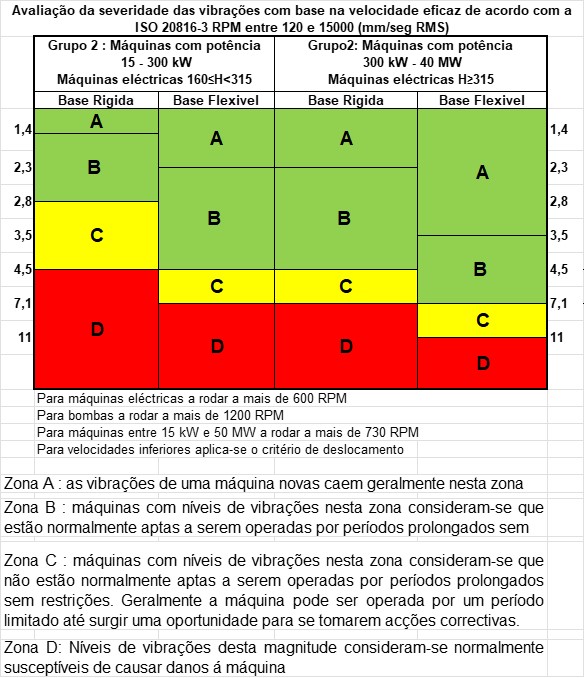
To find out more about vibration limits, see here.

